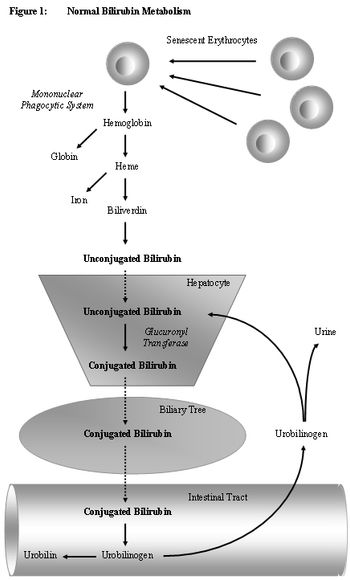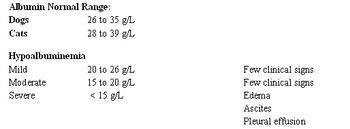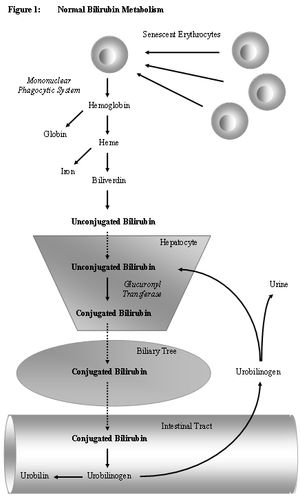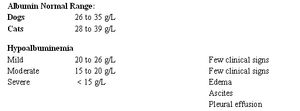
Anemia is most simply characterized by reduced numbers of erythrocytes and/or decreased erythrocyte hemoglobin content.

Anemia is most simply characterized by reduced numbers of erythrocytes and/or decreased erythrocyte hemoglobin content.

Hematopoiesis is the production of new blood cells such as white blood cells (WBC), red blood cells (RBC) and platelets. Although in utero a number of organs are hematopoietically active, including the liver and the spleen, from birth onwards hematopoiesis is centered almost exclusively in the bone marrow.

Normal body temperature in the dog and cat ranges from approximately 100 F to 103 F. Not all animals that have a temperature above this range, however, necessarily have a fever.

Immune-mediated thrombocytopenia (IMT) is a relatively common cause of bleeding in small animals, particularly the dog. Many differing disease processes may initiate IMT.

Albumin is the major determinant of oncotic or colloidal osmotic pressure, the force that holds fluids within the vascular compartment. Most of the important osmotically-active particles in the bloodstream (such as sodium, urea and glucose) are relatively small, and pass freely between the vascular and interstitial compartments, the bodys two major extracellular fluid compartments.

The most common immune-mediated blood disorders in small animal patients are immune-mediated thrombocytopenia (IMT) and immune-mediated hemolytic anemia (IMHA).

Jaundice (or icterus), broadly defined, refers to the accumulation of excessive amounts of bilirubin in either the circulation or the tissues.

Immunosuppressive therapy in dogs and cats is used to treat a wide range of immune-mediated and inflammatory diseases. Immunosuppressive therapy is best understood, and explained, in the context of the specific disease that is being treated. In order to put the principles of treatment into a clinical context, I will therefore concentrate on treatment of immune-mediated blood disorders.

Anemia is most simply characterized by reduced numbers of erythrocytes and/or decreased erythrocyte hemoglobin content.

Albumin is the major determinant of oncotic or colloidal osmotic pressure, the force that holds fluids within the vascular compartment. Most of the important osmotically-active particles in the bloodstream (such as sodium, urea and glucose) are relatively small, and pass freely between the vascular and interstitial compartments, the body's two major extracellular fluid compartments.

Diabetes mellitus can be a very frustrating disease to deal with. The typical diabetic animal referred to a specialist in internal medicine is invariably difficult to control, insulin resistant, prone to ketoacidosis and/or hypoglycemia, and usually has concurrent diseases that complicate therapy.

Published: August 1st 2010 | Updated:

Published: August 1st 2010 | Updated:

Published: August 1st 2010 | Updated:

Published: August 1st 2010 | Updated:

Published: August 1st 2010 | Updated:

Published: October 1st 2011 | Updated: